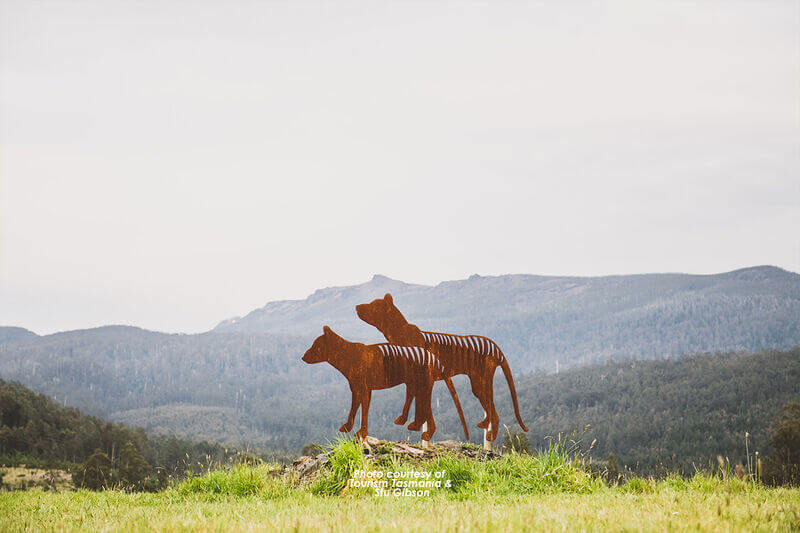Tasmanian Tiger
 Our Tasmanian Tiger has found his new home and is bolted to the rock in our garden.
Our Tasmanian Tiger has found his new home and is bolted to the rock in our garden.
The thylacine (Thylacinus cynocephalus) is one of the most fabled animals in the world. Yet, despite its fame, it is one of the least understood of Tasmania’s native animals.
European settlers were puzzled by it, feared it and killed it when they could. After only a century of white settlement the animal had been pushed to the brink of extinction.
The thylacine looked like a large, long dog, with stripes, a heavy stiff tail and a big head. Its scientific name, Thylacinus cynocephalus, means pouched dog with a wolf’s head.
Fully grown, it measured about 180 cm (6 ft) from nose to tail tip, stood about 58 cm (2 ft) high at the shoulder and weighed up to 30 kg. The short, soft fur was brown except for 13 – 20 dark brown-black stripes that extended from the base of the tail to almost the shoulders. The stiff tail became thicker towards the base and appeared to merge with the body.
Thylacines were usually mute, but when anxious or excited made a series of husky, coughing barks. When hunting, they gave a distinctive terrier-like, double yap, repeated every few seconds. Unfortunately there are no recordings.
The thylacine was shy and secretive and always avoided contact with humans. Despite its common name, ‘tiger’ it had a quiet, nervous temperament compared to its little cousin, the Tasmanian devil. Captured animals generally gave up without a struggle, and many died suddenly, apparently from shock. When hunting, the thylacine relied on a good sense of smell, and stamina. It was said to pursue its prey relentlessly, until the prey was exhausted. The thylacine was rarely seen to move fast, but when it did, it appeared awkward. It trotted stiffly, and when pursued, broke into a kind of shambling canter.
The thylacine is the only mammal to have (possibly) become extinct in Tasmania since European settlement. This is in vivid contrast to mainland Australia, which has the worst record of mammalian extinctions of any country on Earth, with nearly 50% of its native mammals becoming extinct in the past 200 years. Tasmania is unique in that our fauna is abundant, and that the State acts as a refuge – a final hope –
Presently there is a search being conducted in Tasmania to hopefully find a Tasmanian Tiger.








